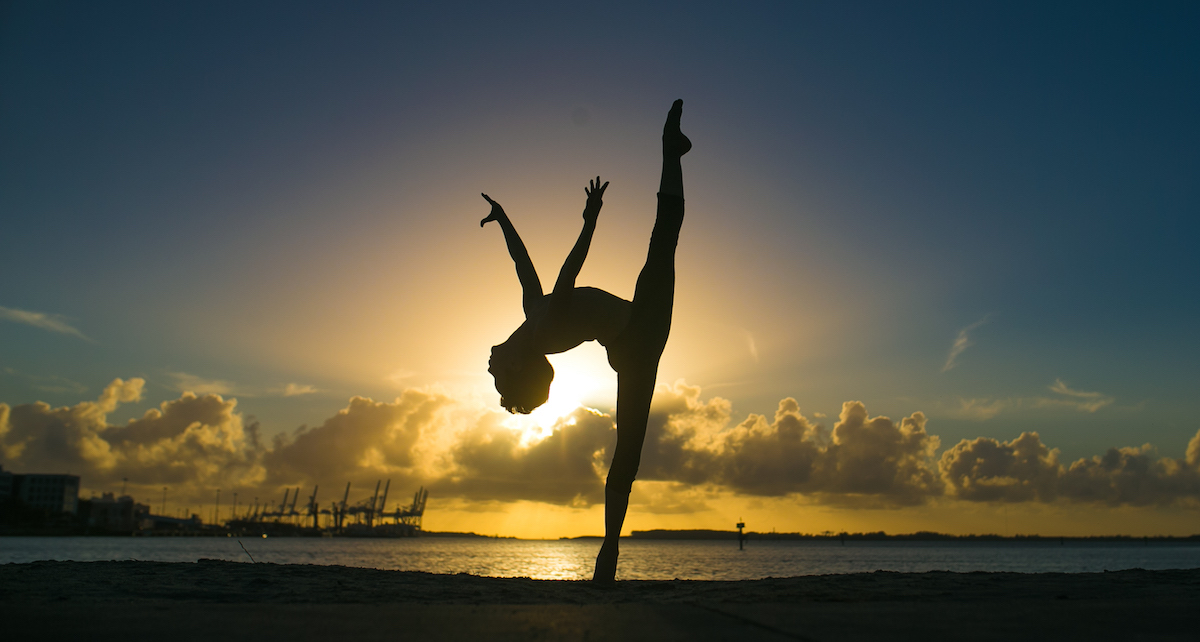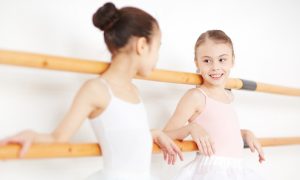It’s summer, but classes, rehearsals and auditions keep on going through the heat. Take care of your body in this season by stopping short of overstretching, keeping cool and hydrated with healthy foods and drinks (fruits, veggies and water, rather than sugary ice cream and sports drinks), using your breath to cool down, and avoiding mid-day exercise. Read on for more on how to beat the summer heat. Have a great rest of the summer, and dance on!
Don’t overstretch!
We dancers love the feeling of a good stretch, and we need the flexibility it provides to perform at our best. But there can be too much of a good thing. Dancers can cherish the feeling of extra flexibility in the warmer summer months (warm muscles are more pliable and “stretchy” – why we ideally always “warm up” before dancing full-out). But we can push that too far, overstretching to the point of tearing muscles and causing joint instability. As general guidelines, but perhaps even more important in the summer months, balance stretching with strengthening.
And listen as your body talks to you. On the other hand, be aware that you can only perceive so much at one time, and it’s all relative. You might be feeling so hot and sweaty dancing that you don’t even hear your muscles tell you that you’re overstretching. Take rests, drink plenty of water (dehydration can lead to muscle stiffness), and play it safe.
Eat and drink to keep it cool – and healthy!
When it’s 93 degrees out, all you might want to eat and drink are things that are ice cold. There’s nothing inherently unhealthy about consuming cold foods and beverages, but it can lead us to overindulge in things like ice cream, blended coffee drinks (Frappucinos and Coollatas, for instance) and sugary sports drinks. Nature already gives us, right out of the ground, things to help us keep cool and hydrated in the hottest months.
Cucumbers, for instance, are incredibly cooling (ever heard the phrase “cool as a cucumber”?) and hydrating because they have a high water content. The same goes for many other raw veggies. It’s not surprising that a big salad for dinner can feel so refreshing on a hot summer night! For fruits, the same is especially true of watermelon (the hydrated nature of the fruit is right in the name) but also the case for berries and stone fruits (peaches, plums, nectarines, plucots, apricots).
All of these things taste great chilly – salads, smoothies, fruit and veggie party platters, et cetera. Feel free to load up on cold, hydrating fruits and veggies in the summer, but be mindful of continuing to keep a generally balanced diet of that food group with adequate lean protein sources, whole grains and low-fat dairy. As always, everything in moderation.
Breathe to “chill out”.
Your breath can be a simple tool to help you cool down. Breathing out for longer than you breathe in helps to release extra heat from our body. That’s why dogs pant when they’re hot (their fur makes sweating, like we do, ineffective). Long exhales also help activate the parasympathetic nervous system (which helps us to “rest and digest” and is the opposite of the sympathetic “fight or flight” nervous system). Heat can make us feel more easily agitated and cranky.
The gorgeous weather can also make us feel more energetic, and able to fit a whole lot more into the longer days. That can leave us feeling stressed out, however, when we try to do too much. And we feel hot and sweaty on top of it all. Breathing out for longer than breathing in can help us feel calmer. Try breathing in for four counts and out for eight counts.
Avoid mid-day exercise.
As much as this tip seems obvious, I must see someone running in the middle of the day, sweating buckets and looking about ready to pass out, on nearly every summer day. Dancers most often can’t control when we rehearse, audition or have class. But, in the ways that we might be able to control when we dance – such as in independent home practice, booking studio space and choices of classes at different times – we should try to avoid the hottest mid-day hours.
And when it comes to cross-training, try to hit up the gym or go for your run in the morning or early evening. That’s a little easier this time of the year, with earlier sunrises and later sunsets! It might also be a good time to explore swimming as cross-training – a great full-body workout, only lacking weight-bearing (for bone-density building). In a temperate pool, that can be done at any time of the day!
By Kathryn Boland of Dance Informa.
Photo (top): Brady Farrar. Photo by Chris Reilly.















